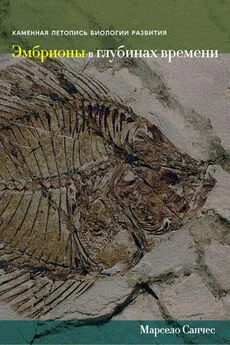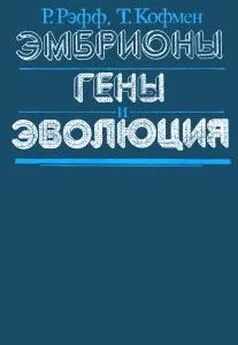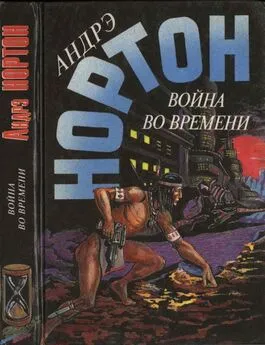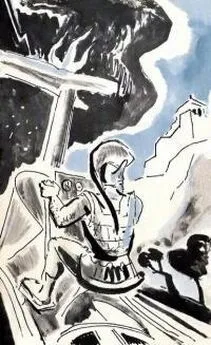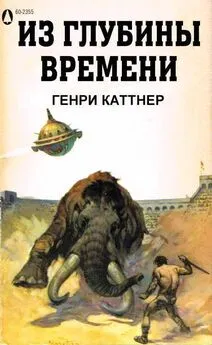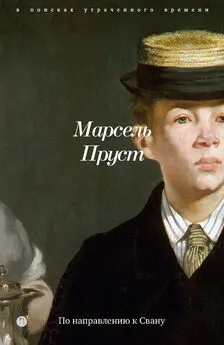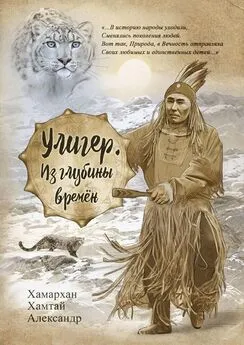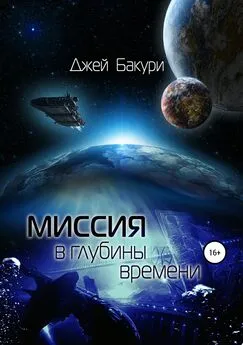Марсело Санчес - Эмбрионы в глубинах времени
- Название:Эмбрионы в глубинах времени
- Автор:
- Жанр:
- Издательство:University of California Press
- Год:2013
- Город:Беркли и Лос-Анджелес, Калифорния
- ISBN:978-0-520-27193-7
- Рейтинг:
- Избранное:Добавить в избранное
-
Отзывы:
-
Ваша оценка:
Марсело Санчес - Эмбрионы в глубинах времени краткое содержание
Эмбрионы в глубинах времени - читать онлайн бесплатно полную версию (весь текст целиком)
Интервал:
Закладка:
Биология не преподаёт никаких экзистенциальных уроков, но может стать поводом для рефлексии. Безграничность времени и осознание того, что безграничность биологического многообразия делает нас всего лишь одним видом на огромном древе жизни, вселяет в нас скромность. Бесконечность красок жизни и изменения — то самое величайшее шоу на Земле — вызывает благоговение. Окружающая среда и индивидуальное развитие тесно переплетаются. Фенотип — это не просто результат проявления генотипа. Окружающая среда может вызвать изменения в развитии; даже ископаемые остатки организмов, будучи такими неполными, демонстрируют это, если знать, как читать их. Мы, люди, представляем собой лишь одну ветвь огромного древа жизни — но зато способную изменять окружающую среду с такой скоростью, которой до сих пор были способны достичь лишь крупнейшие геологические события. То, как мы продолжим воздействовать на окружающую среду, определит судьбу онтогенеза всех живых существ вокруг нас: скромно, считаясь с тем, чего каждый из нас может достичь; возможно, действуя локально, чтобы внести небольшой вклад, и находясь под управлением морального императива; действуя независимо, или даже вразрез с биологией, химией и физикой.
Библиография
Abdala, F., and N. P. Giannini. 2000. Gomphodont cynodonts of the Chañares Formation: The analysis of an ontogenetic sequence. Journal of Vertebrate Paleontology 20: 501-6.
Adams, D., and M. Carwardine. 1990. Last Chance to See. London: Pan Books.
Ahlberg, P., K. Trinajstic, Z. Johanson, and J. A. Long. 2009. Pelvic claspers confirm chondrichthyan-like internal fertilization in arthrodires. Nature 460: 888-89.
Alberch, P. 1989. The logic of monsters: Evidence for internal constraint in development and evolution. Geobios , mémoire spéciale, 12: 21–57.
Amprino, R. 1947. La structure du tissu osseux envisagée comme expression de différences dans la vitesse de l’accroissement. Archives of Biology 58: 315-30.
Anders, U., W. v. Koenigswald, I. Ruf, and B. H. Smith. 2011. Generalized individual dental age stages for fossil and extant placental mammals. Paläontologische Zeitschrift 85: 321-39.
Anderson, J. S., R. R. Reisz, D. Scott, N. B. Fröbisch, and S. S. Sumida. 2008. A stem batrachian from the early Permian of Texas and the origin of frogs and salamanders. Nature 453: 515-18.
Andrews, C. W. 1913. A descriptive catalogue of the marine reptiles of the OxfordClay, based on the Leeds Collection in the British Museum (Natural History), London. London: British Museum.
Asher, R. J., N. Bennett, and T. Lehmann. 2009. The new framework for understanding placental mammal evolution. Bioessays 31: 853-64.
Asher, R. J., and T. Lehmann. 2008. Dental eruption in afrotherian mammals. BMC Biology 6: 14.
Azorit, C., J. Muñoz-Cobo, J. Hervás, and M. Analla. 2004. Aging through growth marks in teeth of Spanish red deer. Wildlife Society Bulletin 32: 702-10.
Balanoff, A., and T. Rowe. 2007. Osteological description of an embryonic skeleton of the extinct elephant bird, Aepyornis (Palaeognathae: Ratitae). Society of Vertebrate Paleontology Memoir 9: 1-53.
Barnosky, A. D. 2001. Distinguishing the effects of the Red Queen and Court Jester on Miocene mammal evolution in the northern Rocky Mountains. Journal of Vertebrate Paleontology 21: 172-85.
Bell, M. A. 2009. Implications of a fossil stickleback assemblage for Darwinian gradualism. Journal of Fish Biology 75: 1977-99.
Benton, M. J. 2000. Stems, nodes, crown clades, and rank-free lists: Is Linnaeus dead? Biological Review 75: 633-48.
Benton, M. J. 2004. Vertebrate Palaeontology . 3rd ed. Malden, MA: Blackwell.
Benton, M. J. 2009a. Paleontology and the history of life. In M. Ruse and J. Travis, eds., Evolution: The First Four Billion Years (pp. 80-104). Cambridge, MA: Belknap Press.
Benton, M. J. 2009b. The Red Queen and the Court Jester: Species diversity and the role of biotic and abiotic factors through time. Science 323: 728-32.
Benton, M. J. 2010. Studying function and behavior in the fossil record. PLoS Biology 8: e1000321.
Billet, G. A., C. de Muizon, and B. M. Quispe. 2008. Late Oligocene mesotheriids (Mammalia, Notoungulata) from Salla and Lacayani (Bolivia): Implications for basal mesotheriid phylogeny and distribution. Zoological Journal of the Linnean Society 152: 153–200.
Bininda-Emonds, O. R. P., J. E. Jeffery, and M. K. Richardson. 2003. Inverting the hourglass: Quantitative evidence against the phylotypic stage in vertebrate development. Proceedings of the Royal Society of London B: Biological Sciences 270 (1513): 341-46.Bininda-Emonds, O. R. P., J. E. Jeffery, M. R. Sánchez-Villagra, J. Hanken, M. Colbert, C. Pieau, L. Selwood, C. T. Cate, A. Raynaud, C. K. Osabutey, and M. K. Richardson. 2007. Forelimb — hind limb developmental timing across tetrapods. BMC Evolutionary Biology 7: 182.
Black, K. H., M. Archer, S. J. Hand, and H. Godthelp. 2010. First comprehensive analysis of cranial ontogeny in a fossil marsupial from a 15-million-year-old cave deposit in northern Australia. Journal of Vertebrate Paleontology 30: 993-1011.
Blackburn, D. G., and H. E. Evans. 1986. Why are there no viviparous birds? American Naturalist 128: 165-90.
Blumberg, M. S. 2008. Freaks of Nature . Oxford: Oxford University Press.
Bolk, L. 1926. Das Problem der Menschenwerdung . Jena: Fischer Verlag.
Borel, E. 1913. Mécanique statistique et irréversibilité. Journal de Physique , 5e série, 3: 189-96.
Botha-Brink, J., and K. D. Angielczyk. 2010. Do extraordinarily high growth rates in Permo-Triassic dicynodonts (Therapsida, Anomodontia) explain their success before and after the end-Permian extinction? Zoological Journal of the Linnean Society 160: 341-65.
Bowler, P. J. 1983. The Eclipse of Darwinism: Anti-Darwinian Evolutionary Theories in the Decades around 1900 . Baltimore: Johns Hopkins University Press.
Brasier, M. D., O. R. Green, A. P. Jephcoat, et al. 2002. Questioning the evidence for earth’s oldest fossils. Nature 416: 76–81.
Brayard, A., G. Escarguel, H. Bucher, C. Monnet, T. Brühwiler, N. Goudeman, T. Galfetti, and J. Guex. 2009. Good genes and good luck: Ammonoid diversity and the end-Permian mass extinction. Science 325: 1118-21.
Brinkman, D. 1988. Size-independent criteria for estimating relative age in Ophiacodon and Dimetrodon (Reptilia, Pelycosauria) from the Admiral and lower Belle Plains Formations of west-central Texas. Journal of Vertebrate Paleontology 8: 172-80.
Brinkmann, W. 1996. Ein Mixosaurier (Reptilia, Ichthyosauria) mit Embryonen aus der Grenzbitumenzone (Mitteltrias) des Monte San Giorgio (Schweiz, Kanton Tessin). Eclogae geologicae Helvetiae 89: 1321-44.
Bryant, H. N. 1995. The threefold parallelism of Agassiz and Haeckel, and polarity determination in phylogenetic systematics. Biology and Philosophy 10: 197–217.
Bryant, H. N., and A. P. Russell. 1992. The role of phylogenetic analysis in the inference of unpreserved attributes of extinct taxa. Philosophical Transactions of the Royal Society of London B 337: 405-18.
Bucher, H., N. H. Landman, J. Guex, and S. M. Klofak. 1996. Mode and rate of growth in ammonoids. In N. H. Landman, K. Tanabe, and R. A. Davis, eds., Ammonoid Paleobiology. Topics in Geobiology 13: 407-61.
Buckman, S. S. 1887–1907. A Monograph of the Ammonites of the Inferior Oolite Series . London: Palaeontographical Society.
Buffetaut, E., J. Li, H. Tong, and H. Zhang. 2007. A two-headed reptile from the Cretaceous of China. Biology Letters 3: 80–81.
Bürgin, T. 1999. Middle Triassic marine fish faunas from Switzerland. In G. H. Arratia and H. P. Schultze, eds., Mesozoic Fishes 2 — Systematics and Fossil Record (pp. 481-94). Munich: Pfeil Verlag.
Butler, P. M. 1995. Ontogenetic aspects of dental evolution. International Journal of Developmental Biology 39: 25–34.
Camus, A. 1942. Le mythe de Sisyphe . Paris: Gallimard.
Canoville, A., and M. Laurin. 2010. Evolution of humeral microanatomy and lifestyle in amniotes, and some comments on paleobiological inferences. Biological Journal of the Linnean Society 100: 384–406.
Carlini, A. A., M. R. Ciancio, and G. J. Scillato-Yané. 2010. Middle Eocene — early Miocene Dasypodidae (Xenarthra) of southern South America: Faunal succession at Gran Barranca — biostratigraphy and paleoecology. In R. H. Madden, A. A. Carlini, M. G. Vucetich, and R. F. Kay, eds., The Paleontology of Gran Barranca: Evolution and Environmental Change through the Middle Cenozoic of Patagonia (pp. 106-29). Cambridge: Cambridge University Press.
Carroll, L. 1871. Through the Looking-Glass. London: Macmillan.
Carroll, S. B. 2008a. Evo-devo and an expanding evolutionary synthesis: A genetic theory of morphological evolution. Cell 134: 25–36.
Carroll, S. B. 2008b. Into the Jungle: Great Adventures in the Search for Evolution. San Francisco: Benjamin Cummings.
Carpenter, K. 1999. Eggs, Nests, and Baby Dinosaurs: A Look at Dinosaur Reproduction. Bloomington: Indiana University Press.
Cartelle, C., and G. De Iuliis. 2006. Eremotherium laurillardi (Lund)Xenarthra, Megatheriidae), the Panamerican giant ground sloth: Taxonomic aspects of the ontogeny of skull and dentition. Journal of Systematic Palaeontology 4: 199–209.
Carter, A. M. 2008. What fossils can tell us about the evolution of viviparity and placentation. Placenta 29: 930-31.
Castanet, J. 1994. Age estimation and longevity in reptiles. Gerontology 40: 174-92.
Chiappe, L. M. 2007. Glorified Dinosaurs: The Origin and Early Evolution of Birds . New York: Wiley-Liss.
Chiappe, L. M., R. A. Coria, L. Dingus, F. Jackson, A. Chinsamy, and M. Fox. 1998. Sauropod dinosaur embryos from the Late Cretaceous of Patagonia. Nature 396: 258-61.
Chiappe, L. M., J. Marugán-Lobón, S. Ji, and Z. Zhou. 2008. Life history of a basal bird: Morphometrics of the early Cretaceous Confuciusornis. Biology Letters 4: 719-23.
Chinsamy-Turan, A. 2001. Dinosaur growth — egg to adult. In Encyclopedia of Life Sciences. New York: Wiley.
Chinsamy-Turan, A. 2005. The Microstructure of Dinosaur Bone: Deciphering Biology with Fine-Scale Techniques. Baltimore: Johns Hopkins University Press.
Читать дальшеИнтервал:
Закладка:
